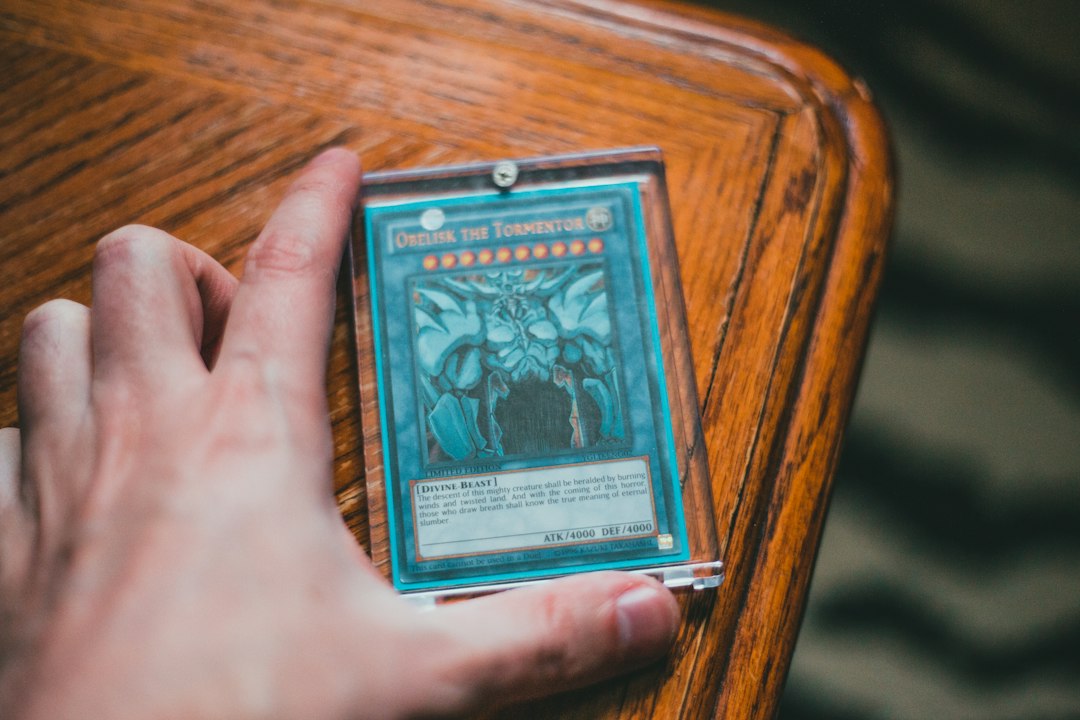Hit points are a fundamental aspect of the Dungeons & Dragons 5th edition (5e) gameplay. They represent a character’s physical and mental resilience, their ability to withstand damage and continue fighting. Understanding how hit points work is crucial for both players and Dungeon Masters, as it affects combat strategies, character creation, and overall gameplay experience.
Key Takeaways
- Hit points represent a character’s physical and mental resilience in combat.
- Factors affecting hit point calculation include class, level, constitution modifier, and hit dice.
- Maximum hit points are calculated by adding the character’s hit dice to their constitution modifier and multiplying by their level.
- Current hit points are the character’s current health and can be reduced by taking damage in combat.
- Temporary hit points are a separate pool of health that can be gained through spells or abilities and do not stack with each other.
- Hit dice are used to regain hit points during a short rest and can also be used to determine the number of hit points gained during a level up.
- Healing spells and abilities can restore hit points, while certain damage types can have additional effects on a character’s health.
- Managing hit points in combat involves balancing offensive and defensive actions to avoid taking too much damage.
- Tips for optimizing hit points include choosing a class with a high hit die, increasing constitution, and taking feats or abilities that increase health or provide additional sources of temporary hit points.
Understanding the Basics of Hit Points in 5e
In 5e, hit points (HP) are a numerical representation of a character’s health. They determine how much damage a character can take before being incapacitated or killed. Each character starts with a certain number of hit points based on their class and race, and this number increases as they level up.
Hit points play a vital role in combat encounters. When a character takes damage, their hit points decrease. If their hit points reach zero, they fall unconscious and may die if not stabilized or healed in time. On the other hand, if a character’s hit points are restored to their maximum value, they are considered fully healed and ready for action.
Factors Affecting Hit Points Calculation
Several factors affect the calculation of hit points in 5e. These include class and race modifiers, the character’s Constitution score, and level advancement.
Class and race modifiers can add or subtract hit points from a character’s base value. For example, a dwarf character gains an additional hit point at each level due to their racial trait. Similarly, certain classes like the Barbarian have features that increase their hit point maximum.
The Constitution score also plays a significant role in determining hit points. Characters with higher Constitution scores have more hit points because Constitution represents physical toughness and resilience.
Level advancement is another factor that affects hit points calculation. As characters level up, they gain additional hit points based on their class’s hit dice. Each class has a specific hit dice size (e.g., d6, d8, d10, d12), and when a character levels up, they roll their hit dice and add the result to their hit point maximum.
How to Calculate Maximum Hit Points
To calculate a character’s maximum hit points, you need to consider their class, race modifiers, Constitution score, and level advancement. The formula for calculating maximum hit points is as follows:
Maximum Hit Points = Base Hit Points + Constitution Modifier + Level Advancement
The base hit points are determined by the character’s class and race. For example, a level 1 Fighter has a base hit point value of 10. If the character is a dwarf, they gain an additional hit point due to their racial trait.
The Constitution modifier is calculated by subtracting 10 from the character’s Constitution score and dividing the result by 2 (rounded down). For example, if a character has a Constitution score of 16, their Constitution modifier would be +3.
Level advancement refers to the additional hit points gained when leveling up. Each class has a specific hit dice size that is rolled at each level up. The result of the roll is added to the character’s hit point maximum.
How to Calculate Current Hit Points
Calculating a character’s current hit points involves subtracting damage taken from their maximum hit points. The formula for calculating current hit points is as follows:
Current Hit Points = Maximum Hit Points – Damage Taken
For example, if a character has a maximum hit point value of 30 and takes 10 points of damage, their current hit points would be 20.
How to Calculate Temporary Hit Points

Temporary hit points (THP) are a special type of hit points that provide a buffer against damage. They are temporary in nature and do not stack with each other. Temporary hit points are gained through spells, class features, or other abilities.
To calculate temporary hit points, you simply add the temporary hit point value to the character’s current hit points. For example, if a character has 20 current hit points and gains 5 temporary hit points, their new total would be 25.
Hit Dice: What They Are and How to Use Them
Hit dice are a resource that characters can use to heal themselves during short rests. Each class has a specific hit dice size, which represents the amount of healing they can potentially gain.
During a short rest, a character can spend hit dice to regain hit points. The number of hit dice they can spend is equal to their level. For example, a level 3 character can spend up to 3 hit dice during a short rest.
To use hit dice for healing, the character rolls their hit dice and adds their Constitution modifier to the result. The total is then added to their current hit points. For example, if a character rolls a d8 hit dice and gets a result of 5, and their Constitution modifier is +2, they would regain 7 hit points.
Healing and Regaining Hit Points
In addition to using hit dice during short rests, there are several other ways to heal and regain hit points in 5e. These include spells, potions, class features, and magical items.
Spells like Cure Wounds and Healing Word can be used by spellcasting classes to directly heal themselves or others. Potions of Healing are consumable items that can be found or purchased in-game and provide an instant boost to hit points.
Certain class features, such as the Fighter’s Second Wind or the Paladin’s Lay on Hands, allow characters to heal themselves or others using special abilities. Magical items like healing potions or healing spells stored in wands or scrolls can also be used for healing purposes.
During combat encounters, characters can regain hit points by using their action to take the Dodge action or by using healing spells or abilities. It’s important to strategize and prioritize healing when necessary to ensure the survival of the party.
Damage Types and Their Effects on Hit Points
There are several different damage types in 5e, and each has its own effects on hit points. The most common damage types include slashing, piercing, bludgeoning, fire, cold, lightning, acid, poison, psychic, radiant, and necrotic.
Slashing, piercing, and bludgeoning damage are the most common types of physical damage. They directly reduce a character’s hit points when they take damage from weapons or physical attacks.
Fire, cold, lightning, acid, poison, psychic, radiant, and necrotic damage are all different types of elemental or magical damage. Each has its own unique effects and may have additional consequences beyond reducing hit points.
For example, fire damage can cause a character to catch on fire or take ongoing damage if they fail a saving throw. Poison damage can cause a character to become poisoned or suffer ongoing effects. It’s important for players to be aware of the different damage types and their potential effects on their hit points.
Managing Hit Points in Combat
Managing hit points effectively during combat is crucial for survival. Here are some tips for managing hit points in combat:
1. Prioritize healing: If a character’s hit points are low, it’s important to prioritize healing them to prevent them from falling unconscious or dying.
2. Use defensive abilities: Certain classes have defensive abilities that can help mitigate damage and protect hit points. Abilities like the Barbarian’s Rage or the Monk’s Deflect Missiles can be used strategically to reduce incoming damage.
3. Take cover: If possible, characters should take cover behind objects or use the environment to their advantage to reduce the chances of taking damage.
4. Use crowd control: Spells or abilities that incapacitate or control enemies can prevent them from dealing damage to the party, reducing the overall strain on hit points.
5. Communicate with the party: Effective communication with the rest of the party can help coordinate healing and defensive strategies, ensuring that hit points are managed efficiently.
Tips for Optimizing Your Hit Points in 5e
Optimizing hit points for your character can make a significant difference in their survivability. Here are some tips for optimizing hit points in 5e:
1. Choose a class with a high hit dice size: Classes like Barbarians and Fighters have a d12 hit dice, which means they have the potential to gain more hit points per level.
2. Increase your Constitution score: A higher Constitution score means a higher hit point maximum. Consider prioritizing Constitution when assigning ability scores during character creation.
3. Take feats or class features that increase hit points: Some feats, like Tough, or class features, like the Barbarian’s Tough Hide, can increase a character’s hit point maximum.
4. Use temporary hit points strategically: Temporary hit points can provide a buffer against damage, so try to gain them before entering combat or when facing particularly dangerous enemies.
5. Invest in healing abilities or items: If your character has access to healing spells or abilities, make sure to use them strategically to keep your hit points topped up.
Understanding how hit points work in 5e is essential for both players and Dungeon Masters. Hit points determine a character’s survivability and play a crucial role in combat encounters. By understanding how to calculate maximum and current hit points, as well as temporary hit points and the use of hit dice, players can optimize their characters’ health and make strategic decisions during gameplay. Managing hit points effectively during combat and understanding the different damage types can also greatly impact a character’s survival. By following these tips and strategies, players can ensure that their characters are well-equipped to face the challenges of their adventures in the world of Dungeons & Dragons 5th edition.
If you’re a Dungeons & Dragons player, you know that hit points are a crucial aspect of the game. But how exactly do you calculate them in the 5th edition? If you’re looking for a comprehensive guide on this topic, look no further. Check out this informative article on how to calculate hit points in 5e. It breaks down the process step by step, ensuring that you have a clear understanding of how to determine your character’s hit points accurately. Whether you’re a beginner or an experienced player, this article is a must-read for anyone looking to master the mechanics of hit points in D&D 5e.




Leave a Reply
You must be logged in to post a comment.